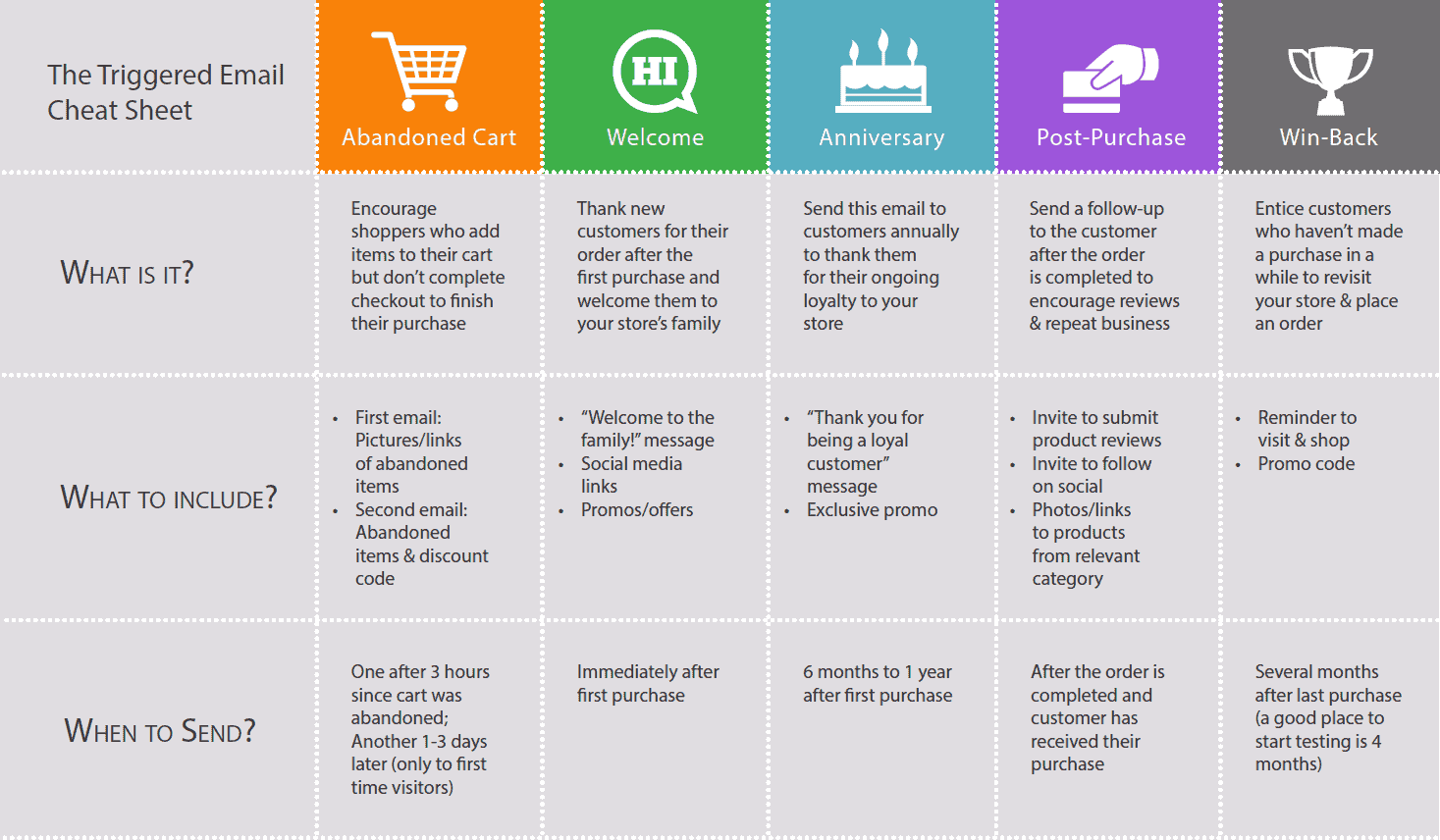Trigger-Based Email Campaigns: Unlock Skyrocketing Sales and Customer Engagement
Looking to boost your sales effortlessly? Trigger-based email campaigns might just be your secret weapon. By sending automated emails tied to specific customer actions or behaviors, you’re not only staying relevant but also increasing engagement. Think about it: a timely cart abandonment email can convert a hesitant shopper into a paying customer. In this post, you’ll discover how to set up these potent campaigns, optimize them for success, and turn casual visitors into loyal buyers. Ready to transform your email strategy? Let’s dive in!
Understanding Trigger-Based Email Campaigns
In today’s digital marketing landscape, trigger-based email campaigns play a pivotal role in engaging with customers on a personalized level. These campaigns are designed to automatically send emails to recipients based on specific actions or triggers they have taken, such as signing up for a newsletter, making a purchase, or abandoning a shopping cart. Understanding the concept and importance of trigger-based email campaigns is essential for crafting effective marketing strategies that drive conversions and build lasting customer relationships.
Growth Marketing Strategies for Financial Advisors
Growth Marketing Strategies for Financial Advisors: A Comprehensive Guide In the current, highly competitive field of financial advisory, the adoption of growth marketing strategies has become essential for staying competitive and achieving sustainable success. As a...
10 Essential Inbound Marketing Strategies for Small Business Growth
Unlocking Success: 10 Essential Inbound Marketing Strategies for Small Business Growth Inbound marketing strategies generate three times more leads per dollar than traditional marketing methods. Inbound leads cost 61% less on average than outbound leads. (source)...
Use Email for Small Business Success
Use Email for Small Business Success In today's highly competitive business landscape, effective marketing plays a crucial role in the success of small businesses. With numerous digital marketing channels available, it's essential to identify the most impactful...

Image source: Bluecore.com
Definition and Importance
Trigger-based email campaigns are automated email messages sent to subscribers based on certain predetermined triggers or actions. These triggers can include a variety of customer behaviors, such as website visits, email opens, clicks, purchases, or form submissions. By automating the sending process, businesses can deliver timely and relevant messages to their audience, enhancing the overall customer experience.
In the realm of modern marketing strategies, trigger-based email campaigns are highly valuable. They enable businesses to nurture leads, re-engage inactive customers, and drive conversions effectively. By sending targeted messages triggered by specific customer actions, companies can deliver personalized content that resonates with recipients, leading to higher engagement rates and increased brand loyalty.
Benefits of Triggered Email Campaigns
Increased Customer Engagement
Triggered emails are highly relevant to recipients as they are triggered by their actions or interests, leading to higher engagement rates compared to generic email blasts.
Personalized Communication
These campaigns allow for personalized messaging based on customer behavior, preferences, and interactions with the brand, creating a more tailored and meaningful communication experience.
Higher Conversion Rates
By sending timely and targeted messages, trigger-based email campaigns have been shown to drive higher conversion rates as they reach customers at crucial points in their buyer’s journey.
Incorporating trigger-based email campaigns into your marketing strategy can significantly enhance your brand’s communication with customers, improve engagement levels, and ultimately drive sales. By leveraging the power of automation and personalization, businesses can create more meaningful interactions with their audience, leading to long-term success in the competitive digital landscape.
Types of Trigger Emails
Forget blasting generic emails! These strategic emails are designed to boost your sales by engaging customers at key moments. Let’s dive into the various types of trigger emails that can supercharge your marketing efforts. From welcome messages to abandoned cart reminders, here are some you can leverage to skyrocket your email marketing success.
Abandoned Cart Emails
Have you ever loaded up your online shopping cart only to leave the website without completing the purchase? Abandoned cart emails can be a game-changer in recovering those lost sales. By sending a gentle reminder to customers about their pending items, you can entice them to return and complete their purchase. These emails create a sense of urgency and provide a seamless path for customers to finalize their transactions. Cart abandonment emails have a 39.07% open rate and a 23.33% click-through rate. (Hotjar)
Welcome Emails
You only have one shot to make a first impression. Welcome emails are your opportunity to make a positive impact on new customers. These emails serve as a friendly introduction, thanking customers for choosing your brand and outlining what they can expect. By personalizing these messages and possibly offering a special discount, or a freebie, you can start building a lasting relationship with your customers right from the start.
Welcome emails have an impressive open rate of approximately 86%, which is nearly 70% higher than the average for general email marketing. So investing in your welcome messages can be a valuable opportunity for your business. Moreover, automated welcome emails reach conversion rates of up to 52%. (Tidio)

Image source: Ellie Burgin
Product Recommendation Emails
Want to enhance the shopping experience for your customers? Product recommendation emails are the way to go. By analyzing customers’ purchase history and behavior, you can suggest personalized product recommendations that align with their preferences. These tailored suggestions not only make the shopping experience more convenient for customers but also increase the likelihood of them making additional purchases. It’s like having a virtual personal shopper guiding customers to the perfect products.
Strategies for Effective Triggered Email Campaigns
Segmentation and personalization play a crucial role in the success of trigger-based email campaigns. By segmenting your audience based on their preferences, behavior, or demographics, you can create personalized emails that resonate with each recipient. Personalization enhances relevance, leading to increased engagement and higher conversion rates. Tailoring your content to individual segments boosts customer satisfaction and loyalty.

Image source: Engagebay.com
Measuring Success and Key Metrics
When it comes to trigger-based email campaigns, understanding how to measure success and track key metrics is crucial for optimizing your marketing strategy. By focusing on Key Performance Indicators (KPIs) and utilizing tracking and analytics tools, you can effectively evaluate the performance of your campaigns and make data-driven decisions to drive sales.
Key Performance Indicators (KPIs)
Key Performance Indicators are essential metrics that provide insights into the effectiveness of your trigger-based email campaigns. Open rates indicate how many recipients opened your emails, click-through rates measure the percentage of users who clicked on links within the email, conversion rates track the number of users who completed a desired action, and revenue generated showcases the financial impact of your campaigns. By monitoring these KPIs, you can assess the overall success of your email marketing efforts and identify areas for improvement.

Image source: Negative Space
Tracking and Analytics Tools
To effectively monitor the performance of your trigger-based email campaigns and gain valuable insights into customer behavior, leveraging tracking and analytics tools is paramount. Tools like Google Analytics, Mailchimp Analytics, and Hubspot Analytics (to name a few) provide comprehensive data on email engagement, audience demographics, and conversion metrics. By analyzing this data, you can identify trends, segment your audience for targeted campaigns, and refine your email content to drive better sales results. Utilizing these tools empowers you to make informed decisions based on real-time data, maximizing the impact of your email marketing strategy.
Case Studies and Success Stories
Email marketing has proven to be a powerful tool in boosting sales for businesses, with trigger-based email campaigns at the forefront of driving revenue growth. Let’s delve into real-life examples showcasing how trigger-based email campaigns have led to significant sales increases for businesses across various industries.
Real-Life Examples of Increased Sales
Case Study 1: E-Commerce Retailer
One e-commerce retailer saw a 30% increase in sales after implementing a trigger-based email campaign that targeted customers who had abandoned their online shopping carts. By sending personalized reminder emails with enticing offers, the retailer was able to win back lost customers and drive a substantial uptick in sales.

Image source: Andrea Piacquadio
Case Study 2: Software Company
A software company utilized trigger-based emails to upsell their existing customers on premium features. By sending targeted emails based on users’ interactions with the platform, the company achieved a 25% increase in upsell revenue within a month. This personalized approach resonated with customers, leading to a substantial revenue boost.
These two success stories show the impact of trigger-based email campaigns in driving sales growth and maximizing revenue potential for businesses. By leveraging data-driven strategies and personalized messaging, companies can create targeted campaigns that resonate with their audience and yield tangible results in terms of increased sales, for little investment and minimal effort.
Best Practices for Implementing Triggered Email Campaigns
Implementing trigger-based email campaigns requires a strategic approach to ensure effectiveness. Here are some best practices to consider:Automation and Workflow Design
Setting up automated workflows for trigger emails is crucial for timely and relevant communication with your audience. Start by identifying key triggers such as website visits, abandoned carts, or subscription renewals. Design efficient processes to streamline campaign management by creating clear paths for different customer interactions. Utilize email marketing platforms that offer robust automation features to schedule emails based on triggers and user behavior.Compliance and Data Privacy
When implementing trigger-based email campaigns, it’s essential to prioritize compliance with data protection regulations such as GDPR and ensuring customer consent. Obtain explicit permission from subscribers to receive trigger emails and clearly communicate how their data will be used. Regularly review and update your data privacy policies to align with the latest regulations. By upholding data privacy standards, you build trust with your audience and avoid potential legal issues. Implementing these best practices will help you create successful trigger-based email campaigns that engage customers while respecting their data privacy and preferences.Future Trends and Innovations
Advancements in technology are continually shaping the landscape of email marketing, offering exciting possibilities for enhancing sales strategies. Let’s explore some of the future trends and innovations that are revolutionizing trigger-based email campaigns to drive increased sales.
Personalization Advancements
Personalization has always been a key aspect of effective email marketing, but new technologies are taking it to the next level. Emerging trends in email personalization tools allow businesses to create highly targeted and relevant content for their audience. By leveraging data analytics and AI algorithms, marketers can now tailor emails based on individual preferences, behaviors, and demographics. This level of personalization not only improves customer engagement but also boosts conversion rates by delivering the right message to the right person at the right time.

Image source: Mali Maeder
AI and Machine Learning Integration
Artificial intelligence (AI) and machine learning (ML) technologies are revolutionizing the way businesses approach email marketing. By integrating AI and ML algorithms into trigger-based email campaigns, companies can analyze vast amounts of data to predict customer behavior, segment audiences more effectively, and automate the delivery of personalized content. These innovative technologies enable marketers to send highly targeted emails at scale, ensuring that each communication is tailored to the recipient’s preferences and interests. As AI continues to evolve, its role in optimizing sales strategies through email campaigns will become increasingly prominent.
Keep an eye on these exciting developments in email marketing technology as they continue to drive sales growth and redefine the way businesses engage with their customers.
Conclusion
Harnessing the power of trigger-based email campaigns is a proven strategy to boost sales and enhance customer engagement. By delivering timely, relevant content based on customer actions, these campaigns can significantly increase open rates and conversions.
Implementing this approach not only nurtures customer relationships but also drives substantial revenue growth. Leveraging behavioral triggers ensures your messages hit the mark, providing value at every stage of the customer journey.
Investing in trigger-based email marketing can transform your sales funnel, turning potential leads into loyal customers. This strategic method is not just effective but essential for staying competitive in today’s digital landscape.
